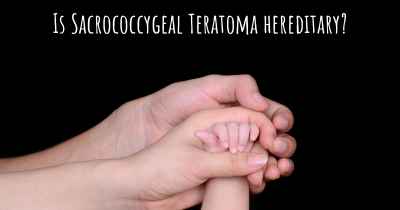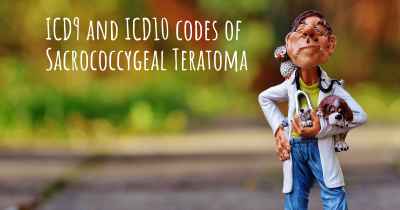What is the life expectancy of someone with Sacrococcygeal Teratoma?
Life expectancy of people with Sacrococcygeal Teratoma and recent progresses and researches in Sacrococcygeal Teratoma

Sacrococcygeal teratoma is a rare tumor that develops at the base of the tailbone in infants. The prognosis and life expectancy can vary depending on various factors such as tumor size, location, and whether it is benign or malignant. In general, the majority of sacrococcygeal teratomas are benign and can be successfully treated with surgery. The survival rate for infants with benign tumors is quite high, with most individuals leading normal, healthy lives. However, malignant sacrococcygeal teratomas can be more challenging to treat and may have a lower survival rate. It is crucial to consult with a medical professional for an accurate prognosis and personalized information.
Sacrococcygeal teratoma (SCT) is a rare tumor that develops at the base of the tailbone (coccyx) in infants. It is a type of germ cell tumor that arises from cells that would normally develop into the reproductive organs. SCTs can vary in size and complexity, ranging from small, benign tumors to large, malignant masses. The prognosis and life expectancy for individuals with SCT depend on several factors, including the tumor's characteristics, the age at diagnosis, and the presence of associated complications.
Tumor Characteristics: The characteristics of the SCT play a significant role in determining the prognosis. Benign SCTs, which are non-cancerous and can usually be completely removed through surgery, generally have a favorable prognosis. Malignant SCTs, on the other hand, are cancerous and can spread to other parts of the body, leading to a more guarded prognosis. The size, location, and extent of the tumor also influence the outcome. Larger tumors or those that invade nearby structures may be more challenging to treat and can impact life expectancy.
Age at Diagnosis: The age at which SCT is diagnosed is another important factor. SCTs are typically detected during prenatal ultrasounds or shortly after birth. The prognosis tends to be better for infants diagnosed prenatally, as it allows for early planning and intervention. In such cases, the tumor can often be surgically removed soon after birth, leading to a more positive outcome. However, if the SCT is not diagnosed until later in infancy or childhood, the prognosis may be less favorable, especially if the tumor has grown significantly or spread to other areas.
Associated Complications: SCTs can be associated with various complications that can impact life expectancy. For instance, large tumors may cause pressure on nearby organs, leading to organ dysfunction or failure. Additionally, SCTs can affect the blood supply to the lower body, potentially causing circulatory problems. In some cases, SCTs may be associated with other congenital abnormalities or genetic syndromes, which can further complicate the prognosis. The presence and severity of these complications can significantly influence the overall outcome.
It is important to note that each case of SCT is unique, and the prognosis can vary widely. While some individuals with SCT may have a relatively normal life expectancy after successful treatment, others may face more challenges and potential complications. The involvement of a multidisciplinary medical team, including pediatric surgeons, oncologists, and other specialists, is crucial in managing SCT and optimizing outcomes.
Posted May 21, 2017 by Erin 2150








